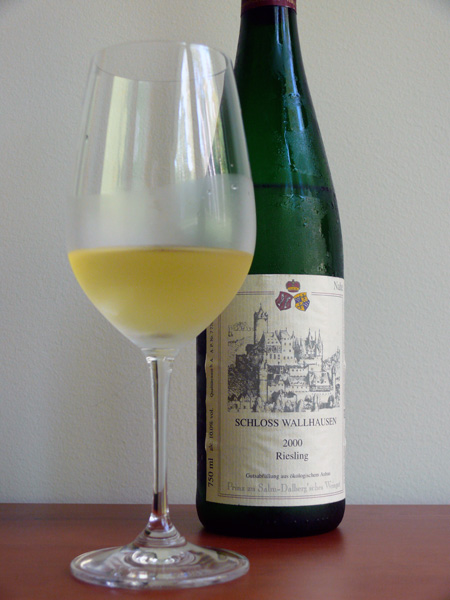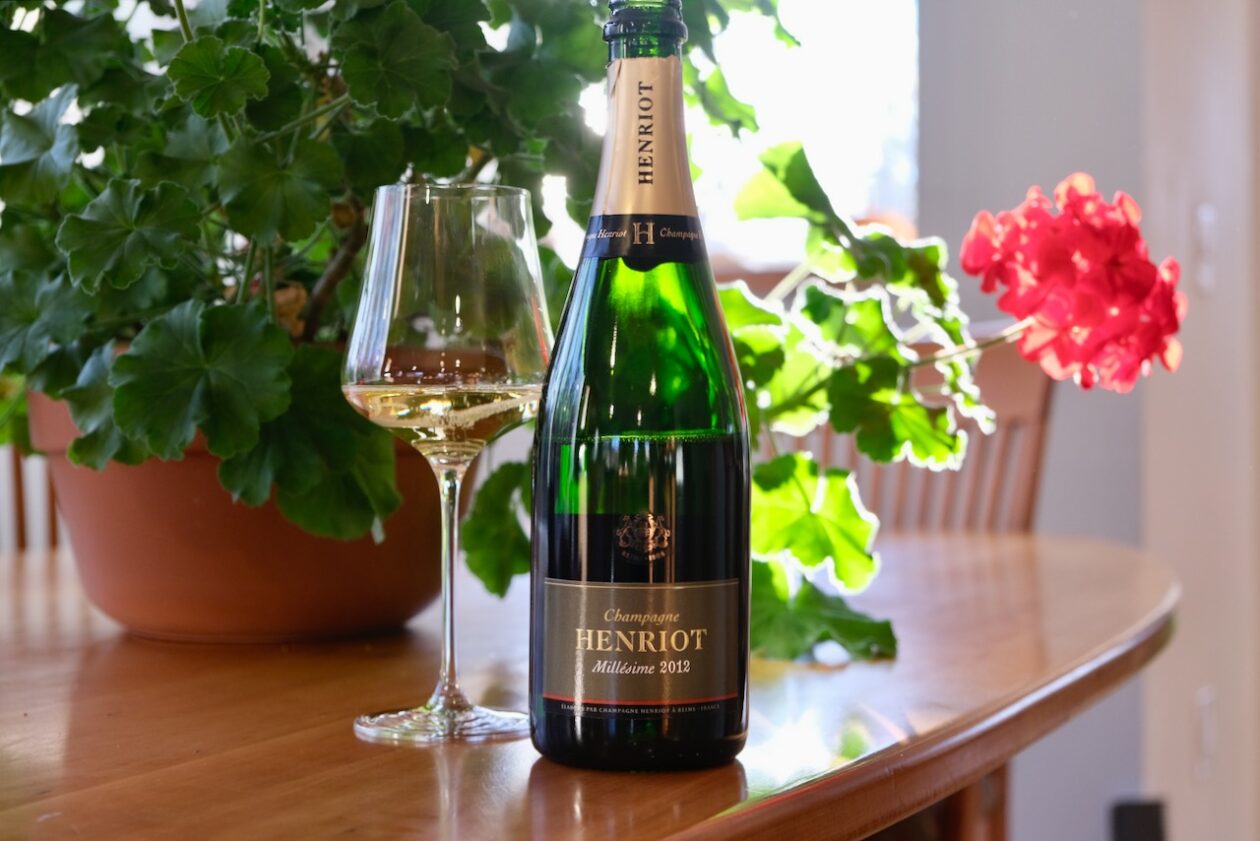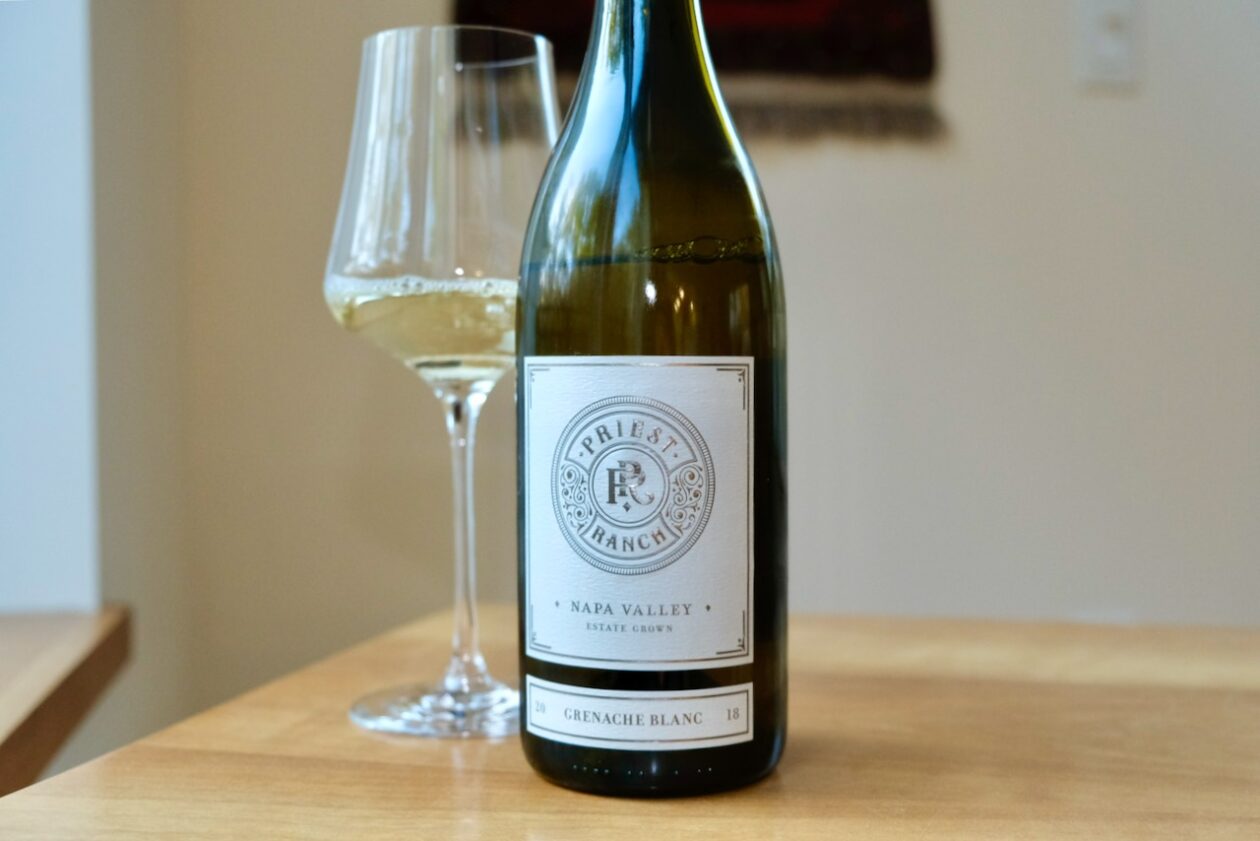Prinz du Salm-Dalberg'sches Weingut
Schloss Wallhausen Riesling
2000
10% ABV | Price of current vintage: about $18–20
We don't know where we got this bottle, and we don't know when. We don't know how much we paid, and we couldn't find the price for this vintage or the current release. We only know that at some point we put a sticker on this bottle to "Open in 2010," and that it seemed like it might be just right for a hot night in New Hampshire.
These grapes were grown in the Nahe region on the oldest continuously owned family wine estate in Germany, dating to 1200 (terroir, baby). The land is now organically farmed—and likely was back then, too. Wines labeled "Schloss Wallhausen" are not from designated vineyards, so are not this producer's top quality, and this one is a simple Qualitätswein.
Still, it's a delight. Gold in the glass, it has a full, white-flowered nose with a bit of lime and faint petrol. On the palate there's apricot and light citrus, with good acidity and a mineral aspect that together balance its moderate sugar. It finishes very long, the stone fruit trailing into the stony distance.
It's hard to say what age has wrought upon this wine, beyond buyer's remorse: I wish we'd laid down more.





Meg,
Check out the cool climate Rieslings coming out of the north end of the Willamette Valley, the Chehalem Mtns AVA. Fine examples of this varietal.
http://www.chehalemmountains.org/
Riesling is perhaps the white grape variety that most rewards cellaring, but it’s important to taste the wines through their evolution so that you build an appreciation for them as they enter their secondary stages.
German Rieslings are fantastic (Leitz, Donnhoff, Karthauserhof, JJ Prum, Willi Schaefer are favorites), but I’d also recommend trying some from Austria – Knoll, Prager, and Rudi Pichler are particularly monumental, as are Nikolaihof, Schloss Gobelsburg, and Loimer.
Australia’s Eden Valley and Clare Valley Rieslings are worth experiencing (Rockford, Penfolds, Grosset, Pike’s, et al) as are the Rieslings from Alsace (Ostertag, Weinbach, Beyer). Each of these regions offer distinctive flavors and aromas that show the unique character of their origins. Taste them with recipes derived from their local cuisines to get a better understanding of how they fit into the overall wine scene (and ultimately into your cellar).
Love Alsatians! It was a wonderful place to visit with very friendly vignerons. Trimbach (they are such a fun and historied family), Hugel and Lucien Albrecht!
Trimach’s Freddie Emile and Clos St Hune; JJ Prum; Selbach; Donhoff; Grosset; Bergstrom; Brundylmeyer; Nikolaihof.
Lots more great ones, but these really shine. Riesling is so versatile, so exciting.
My three recommendations: The Ojai Vineyard, Municipal Winemakers, and Clairborne & Churchill. Three very different but great styles.
Clivity, Dan, Lisa, Dixie, Wayne: Thank you, friends, for these excellent recommendations. I’m a Riesling novice, but may be going to Germany this fall, so I need to get drinking (and writing).
Cheers!
Too many great producers to name in one note. My best suggestions are in our Riesling book:
http://rieslingrules.com/the_book/
look under:
http://rieslingrules.com/the_book/riesling-around-the-world/
Nicolas
How hasn’t anyone mentioned FX Pichler?! ZE BEST!
Your story with the Wallhausen reminded me of ours with a 1998 Schlossgut Diel Riesling also from Nahe. I took this modestly-priced offering to the family Thanksgiving gathering last year as a white alternative to the Cote-Rotie I was taking. None of the white-wine drinkers liked the Diel due to the residual sugar, so my wife, daughter and I enjoyed it (immensely) the next day. Also a simple Qualitatswein, its secondary flavors more than compensated for any lack of pedigree. I bought the last two bottles at my local wine store when we got home; they are resting comfortably.
check out the Mt Boucherie riesling from Kelowna West, Okanagan DVA (Designated Viticultural Area) in BC (Canada). http://www.mtboucheriewinery.com
my review on http://www.astudentofwine.blogspot.com
award winning riesling & extremely competitive price
Nicholas, Smithstreeter, Kristof: thanks so much for these recos.
Bill: it’s always funny what “sells” at Thanksgiving. I’m surprised more people didn’t go for the Riesling, as it’s such a natural with the fare (and also lightly alcoholic, which is a plus with a heavy meal). I’m also surprised you were able to find a ’98 on the shelves last year; it seems unusual to find an aged bottle. Lucky you.